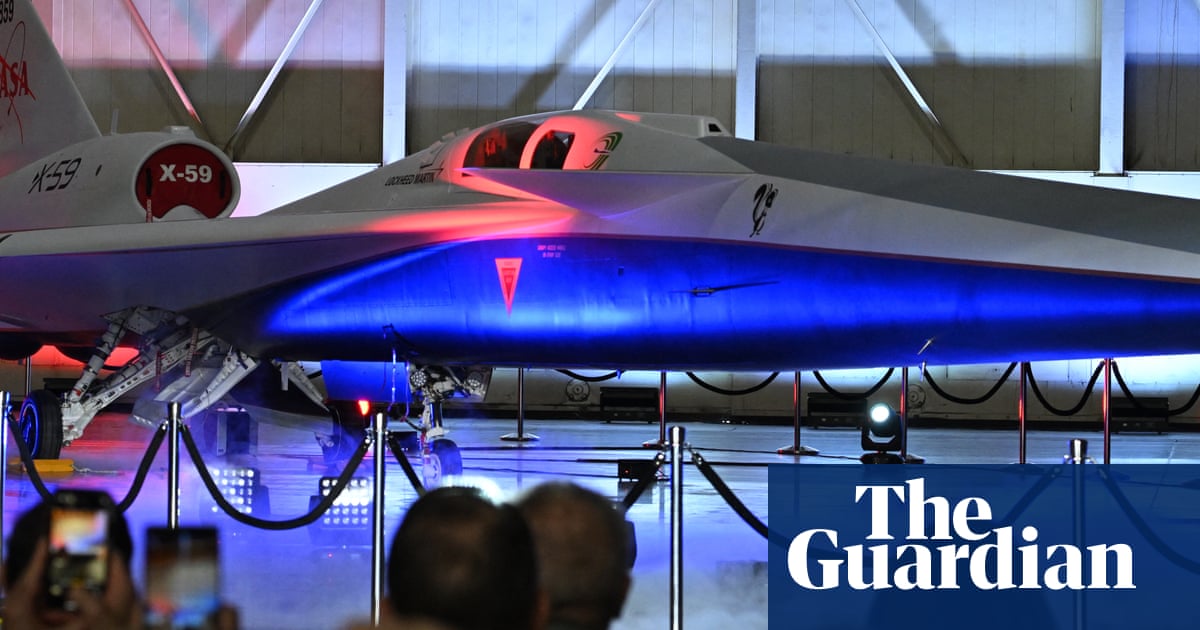In launch event on Friday, agency shared plans to test over US cities to see if it’s quiet enough by engaging ‘the people below’
Nasa has unveiled a one-of-a-kind quiet supersonic aircraft as part of the US space agency’s mission to make commercial supersonic flight possible.
In a joint ceremony with Lockheed Martin Skunk Works in Palmdale, California, on Friday, Nasa revealed the X-59, an experimental aircraft that is expected to fly at 1.4 times the speed of sound – or 925mph (1,488 km/h).
The aircraft, which stands at 99.7ft (30.4 metres) long and 29.5ft wide, has a thin, tapered nose that comprises nearly a third of the aircraft’s full length – a feature designed to disperse shock waves that would typically surround supersonic aircraft and result in sonic booms.
.
Pierce said the X-59’s job would be to “collect data from the people below, determine if that sonic thump is acceptable and then turn the data over to US and international regulatory authorities in hopes to then lift that ban”.
Why can’t commercial airlines fund the project, then? Why is NASA investing public money to deregulate private industry?
This is literally how every expensive R&D project gets done. Private companies won’t dump this kind of money into good R&D, but the government will because they don’t care about ROI.
deleted by creator
Looks to me like a climate change accelerator for rich people. Fewer people per flight, spending more fuel to go faster.
Pleas explain why you think either of those things are true.
the coefficient of drag goes up exponentially the faster you go. As for fewer people, I used my eyes to see that there’s not a lot of room for passengers.





